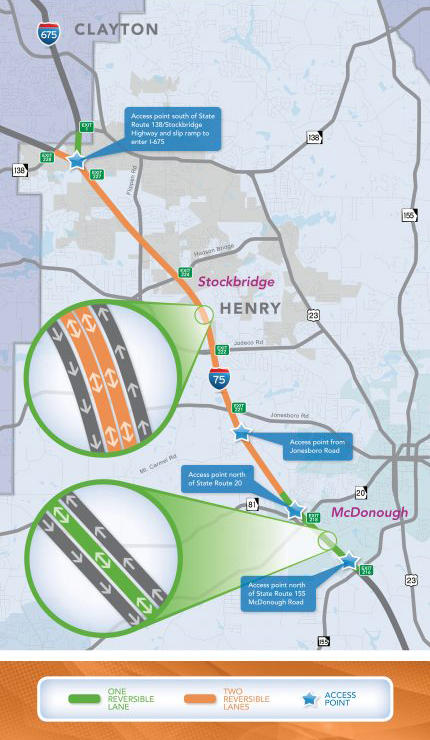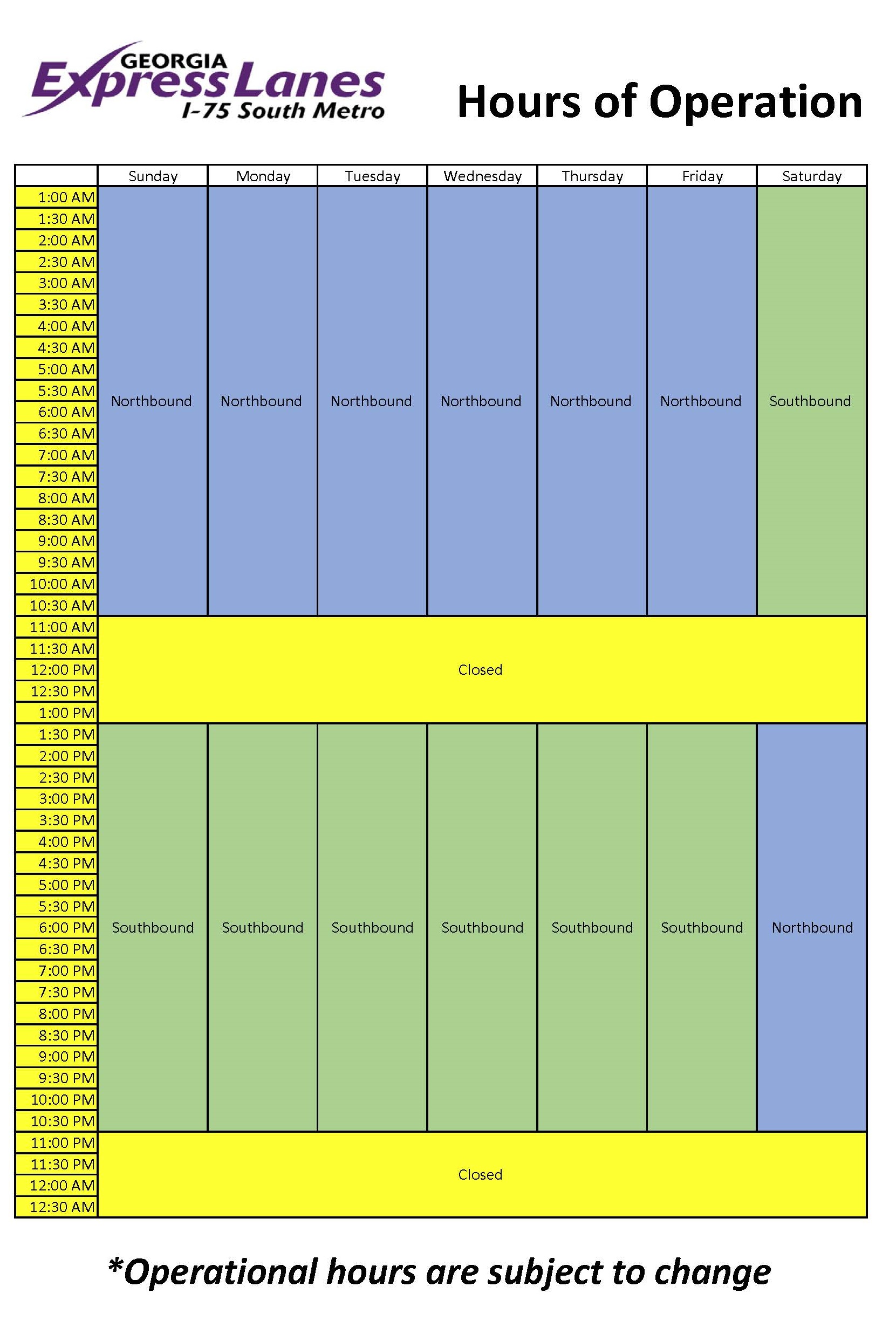I-75 South Metro Express Lanes
Real-Time Toll Rates
I-75 South Metro Express Lanes
Safety on the Express Lanes
Pricing for the Express Lanes
FAQ
Motorists with a registered, active Peach Pass (or a valid interoperable toll pass from Florida or North Carolina) can access the lanes. Vehicles with six or fewer wheels are allowed in the Express Lanes with a valid Peach Pass; tractor trailers are not allowed.
Unlike the I-85 Express Lanes, state-registered transit vehicles and vanpools, registered law enforcement and emergency vehicles are the only vehicles that can ride for free on the Northwest Corridor Express Lanes. State-registered alternate fuel vehicles (AFVs), motorcycles and carpools must pay tolls on the lanes.
The Georgia Express Lanes are dynamically priced, meaning as demand for use of the lanes increases, the toll amount rises to ensure that you experience more reliable trip times.
The minimum toll rate for all Georgia Express Lanes is $0.10 per mile. You can also expect toll rates above the $0.10 per mile minimum to vary based on travel conditions at each express lane facility rather than a predetermined max rate. During periods of very low demand, per mile toll rates on an express lane facility may be replaced with a fixed toll of $0.50 per trip, regardless of the length of the trip.
You can see the posted toll amount before you enter, allowing you to decide whether you want to use the lanes. Tolls are collected electronically with no toll booths requiring you to slow down or stop.
Toll rates are displayed at each lane entry point on changeable message signs. The top rate displayed on the sign is the fee from the upcoming entry point to the next exit, while the bottom rate is the fee from that entry point to the last Express Lane exit. When you exit between entry points, the toll rate will be between the two displayed rates. Once you enter, your toll rate does not change.
When a direction of the Express Lanes is closed, a series of gates at each entry and exit point deter you from getting on the lanes in the wrong direction. In addition, lane signage will read “closed.”
A series of warning gates are placed along every entry to the Express Lanes to alert you prior to the point of entry that the access is closed. The first gate that you see will have a red banner that says “do not enter.”
A final warning gate is heavily weighted to deter motorists from entering in the wrong direction.
Each tolling facility is monitored by the Department of Public Safety and users who get pulled over are subject to a fine.


